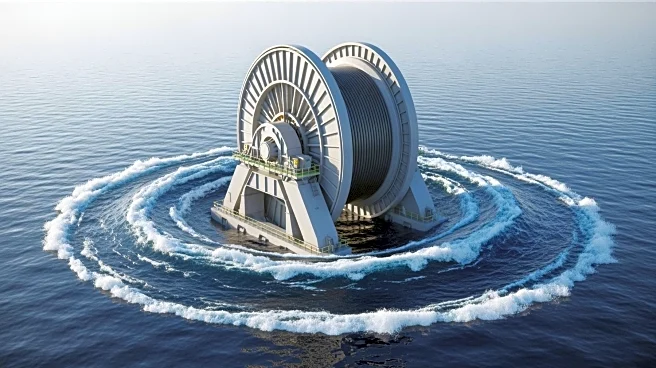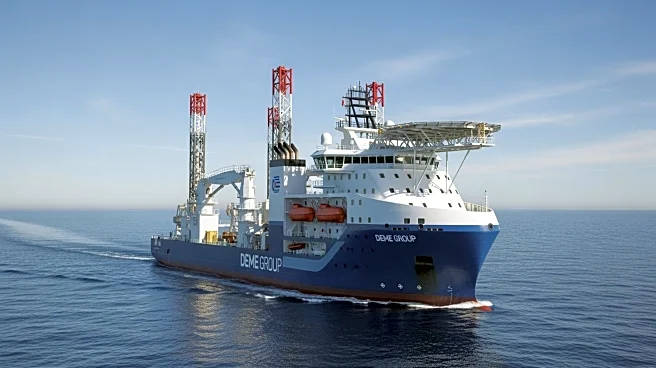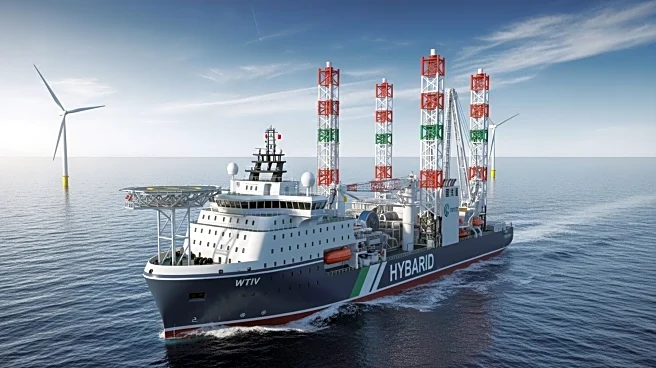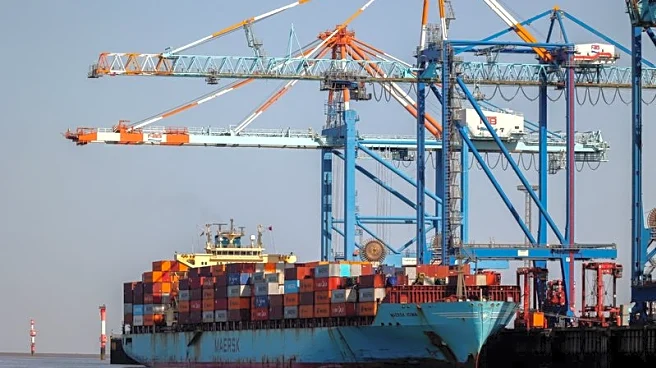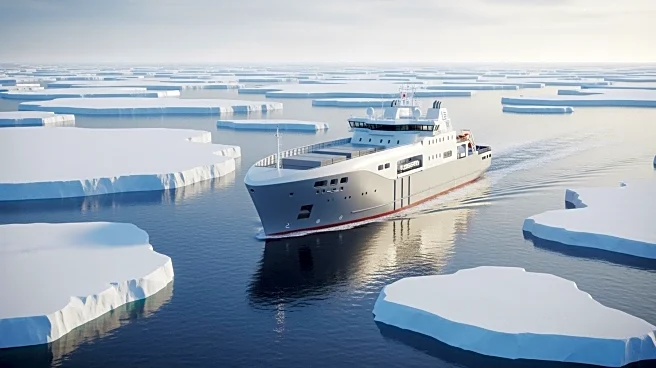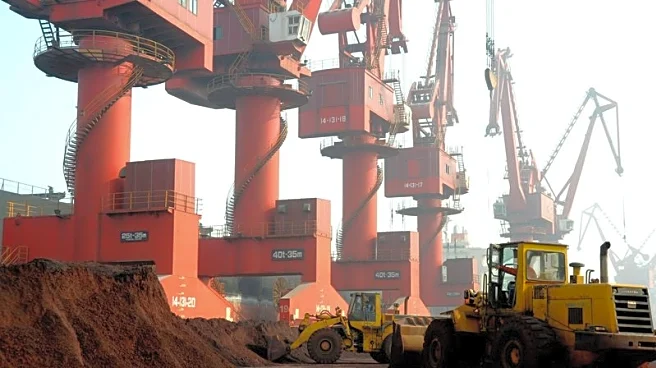What's Happening?
Belgian marine contractor Jan De Nul has launched its newest cable laying vessel, the Fleeming Jenkin, at the CMHI Haimen shipyard in China. The vessel, measuring 215 meters in length with a loading capacity
of 28,000 tonnes, is the largest of its kind globally. Designed to install subsea cables for renewable energy transmission, the Fleeming Jenkin is capable of handling longer and heavier cables in ultra-deep waters up to 3,000 meters. The vessel's construction has entered its final phase, which includes sea trials, ahead of its delivery planned for the second half of 2026. Jan De Nul is also constructing a sister vessel, the William Thomson, to complement its operations. The Fleeming Jenkin will commence its first assignment with TenneT's 2 GW program, installing export cables for offshore grid connection systems in the Netherlands and Germany.
Why It's Important?
The launch of the Fleeming Jenkin represents a significant advancement in the renewable energy sector, particularly in offshore wind energy transmission. By enabling the installation of longer and heavier cables, the vessel supports the expansion of offshore wind farms, which are crucial for increasing renewable energy capacity. This development aligns with global efforts to reduce carbon emissions and transition to sustainable energy sources. The vessel's Ultra-Low Emission technology further underscores Jan De Nul's commitment to minimizing environmental impact, setting a benchmark for eco-friendly maritime operations. The Fleeming Jenkin's capabilities will enhance the efficiency and cost-effectiveness of subsea cable installations, benefiting energy providers and consumers by potentially lowering energy costs and improving grid reliability.
What's Next?
Upon completion of its construction and sea trials, the Fleeming Jenkin will begin its operational duties with TenneT's offshore grid connection systems. This project will involve the installation of over 2,800 kilometers of cable, significantly contributing to the infrastructure needed for renewable energy transmission. As Jan De Nul continues to innovate in vessel design and technology, further advancements in subsea cable installation are expected, potentially leading to more efficient and sustainable energy projects worldwide. The company's ongoing development of additional vessels, such as the rock installation vessel George W. Goethals, indicates a strategic expansion in capabilities to protect and enhance subsea cable infrastructure.
Beyond the Headlines
The introduction of the Fleeming Jenkin highlights the growing importance of specialized maritime technology in supporting global renewable energy goals. The vessel's design and operational efficiency reflect broader industry trends towards sustainability and reduced ecological footprints. As countries strive to meet climate targets, the demand for advanced cable-laying vessels is likely to increase, driving further innovation in maritime engineering. This development also emphasizes the role of international collaboration, as seen in the vessel's construction in China and its deployment in European waters, showcasing the interconnected nature of global energy initiatives.
